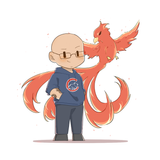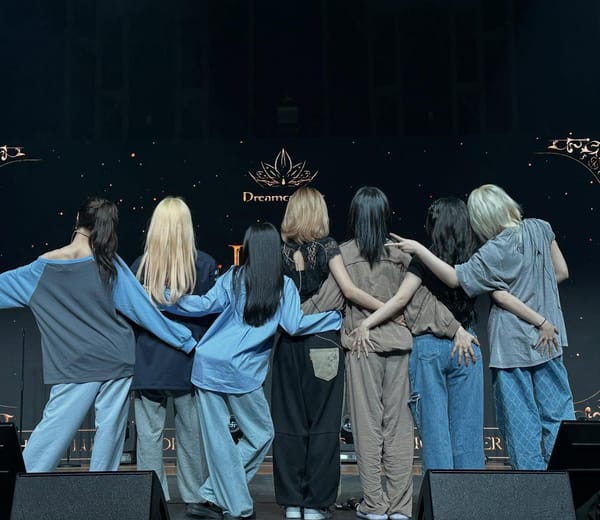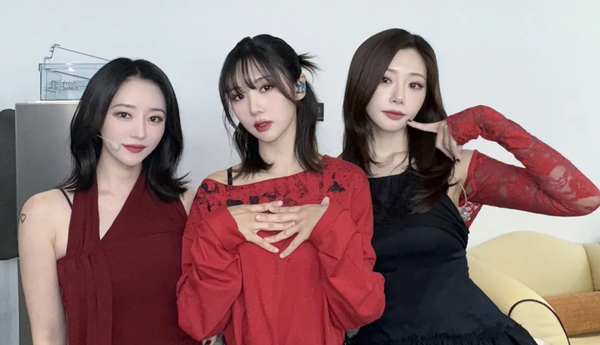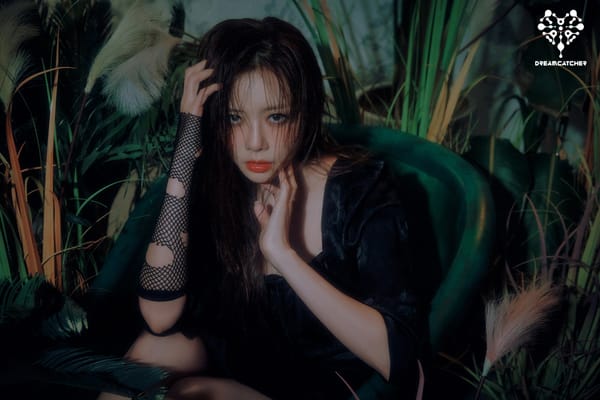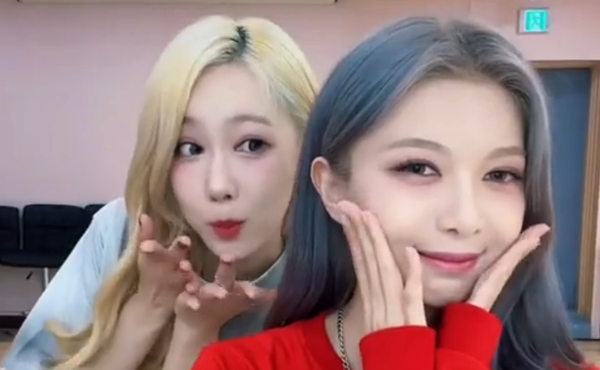Road to Utopia: The Outcome Of Dreamcatcher’s Fight Against Online Hatred
How “Odd Eye” completes a world-building Dystopian trilogy and a message about the quest to abolish the worst of the language of hate.
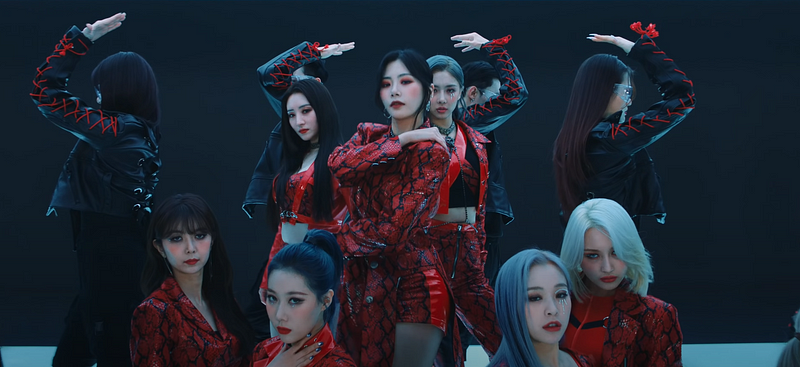
When I took a deep dive look at Dreamcatcher’s first two title tracks in the “Dystopia” trilogy, I became curious about how Dreamcatcher would wrap up both the literal and figurative tales they were telling. On a surface level, I put forth in “Scream” how Dreamcatcher, as spirits, are awakened by The Tree of Language’s corruption by the hatred of those speaking evil, are attacked when trying to fix it, and go out into the world to try to deal with it directly. Then in “BOCA”, Dreamcatcher morphs into roles both priestess and protector, as they work to purify the Tree of Language through shutting the sources/mouths of evil language. Symbolically we hear about Dreamcatcher’s message against hatred and witch-hunting, using what message they’re sending in their lyrics as a means to talk about their own experiences, take control of what’s been directed against them and others like them in the public eye, and grasp some agency in combatting it. It’s a powerful message even as it is challenging to communicate it.
That message finds its ultimate result in execution in “Odd Eye”, a nu-metal/hip-hop/rock hybrid tune that, compared to its predecessors, is more of a slower, yet more deliberate song, with lyrics and a message to match. Looking at the translation of the album description from 7Dreamers, it’s interesting to see what all those “Utopia” teasers that were dropped late last year were about:
“Dreamcatcher, who dream of utopia, suddenly walk towards the place where they want to go. However, the utopia that they had imagined was not merely a place full of happiness as they had expected. With skills gained through new experiences, we are able to understand how utopia isn’t a place where the “happiness” as seen from the outside is equally reflected on the inside — which resembles our current state right now.
Dreamcatcher will not give up and continue to take steps towards inner happiness in the future.”
There are a lot of ideas put forth in this description, but the impression is very sobering. At first, you’d think “utopia” would elicit a sort of happier, brighter future both in the music video storyline and for the song’s symbolism — that not only would the Tree of Language be restored fully after being purified, but that there would be peace again, a return to the distant past of before “people forgot how to say good things”, as what was told to us in the opener of “Scream”.

But this is, after all, Dreamcatcher we’re talking about — the same group that builds its concept on a darker, heavier sound and presentation and the one that ended their “Nightmare” storyline in 2019 title track “PIRI” with an uncertain future that left the outcome of their escape from being Nightmares in doubt. If anything, Dreamcatcher’s take on Utopia, and therefore on how the “Dystopia” story ends, isn’t going to be as simple as purifying mythical trees or actively protecting people from evil comments by muting hate speech. The complexity of battling the issue of hate commentary, especially commentary delivered online, is a realization that drives the heart of the ultimate message that “Odd Eye”, and by extension the Dystopia trilogy and Dreamcatcher themselves, are trying to communicate to their audience.
To break this down, we’ll have to take a brief side trip into the concept of “Utopia”, then circle back around to how that concept figures into both the surface “Odd Eye” music video storyline and the figurative/symbolic message regarding fighting the language of hate that Dreamcatcher ends up delivering in their “Dystopia” finale.
Want to skip around? I’ve linked the sections below:
Navigation
- Utopia — The Impossible Ideal
- Dreamcatcher’s Quest For An “Outer Utopia” — The MV Storyline
- Finding Your “Inner Utopia” — The Message Of “Odd Eye”
- Dystopia’s Ending — The Outcome Of Battling Online Hatred
Utopia — The Impossible Ideal
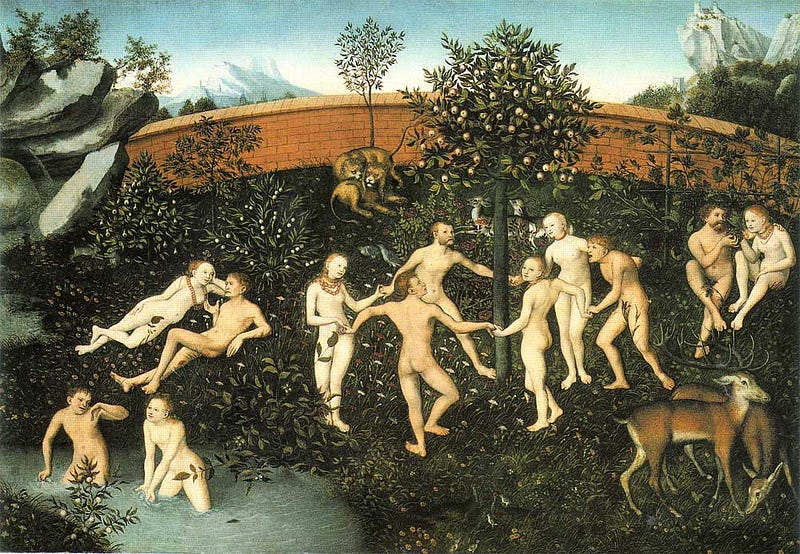
The idea of “Utopia” has a long and storied history, and has been conceptualized in many different areas, including in religion, in society, in science, in economics, and more. The definition, according to the current compilation of information about the term in Wikipedia, is “an imagined community or society that possesses highly desirable or nearly perfect qualities for its citizens”. In the concept of a Utopia, there is a sense of harmony and peace, whether that is economically through the elimination of issues such as poverty and unequal distribution of goods and resources, politically through a clear and present structure that is of service to all who participate in it through defined roles, technologically through the advance of science allowing for inventions and creations that increase intelligence and create conveniences that open up endless possibilities, and more. Historical figures such as writer Thomas More, philosopher Plato, and more have made attempts to define the specific parameters around which Utopia can be achieved.
All of these feed into what Utopia might be, in theory, driven by— an ideology that creates a society where no evil or terrible things can happen, and where people can find contentment and the thought of true happiness and satisfaction. It is a flawless creation, and it is, in essence, the perfect end goal of anyone working towards what could be perceived of as good or right for themselves and those around them. Who wouldn’t want to strive for that?

The problem is that the end goal of Utopia isn’t so easy to achieve — in fact it might be seen as unreachable for a great many reasons, the primary one being that it is an ideal, by definition a standard too high and on some levels too conveniently blind to the realities of humans and societies (hold onto that idea of blindness, by the way — we’ll get back to it real soon).
For every construct of perfect Utopian society that is outlined, there is an accompanying story or eventuality that has the potential to destroy its delicate balance. In religion, Christianity’s Garden of Eden Bible story from the book of Genesis outlines an ideal place for the first man and woman to reside, only to be removed from it by breaking a tenet that makes them aware of the existence of good and evil. The aforementioned Thomas More wrote about “Utopia”, but by definition his coinage of the word etymologically breaks down to being defined as “no place”, leaving open to interpretation whether or not he was being satirical about the prospect of an ideal society or thought there was actually no such way it could exist.

And in more modern media, series such as Netflix’s “Black Mirror” often present seemingly Utopian societies (such as Season 3 episode “Nosedive” and its dependence on social media score for socioeconomic privilege) that when probed, are not as perfect as they make themselves out to be.
In this way, you could almost say ideals of Utopia are impossibilities — and that the aggressive pursuit of them actually might lead you two steps into polar opposite, Dystopian society situations — the kind that you see in the sort of cyberpunk-ish futuristic movies and media that are actually harmful rather than helpful. That said, there’s a notion that one has to learn that this is the case, that you must become aware of how it’s a potentially unachievable goal.
Sound familiar? It should — because it is this lesson learned, and this journey, that appears to be a core element of Dreamcatcher’s idea of Utopia — and the road that is followed in “Odd Eye” to get there (that “Road to Utopia” title is making more sense now, I hope). Let’s take a look at how that plays out in Dreamcatcher’s last “Dystopia” story title track.
Dreamcatcher’s Quest For An “Outer Utopia” — The MV Storyline
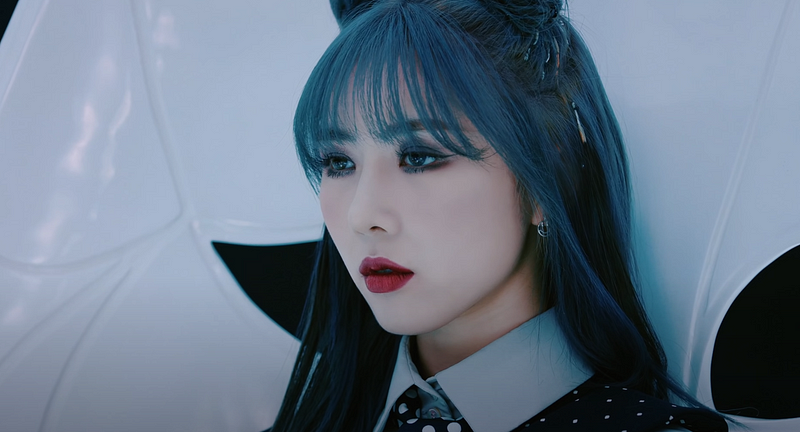
When we last left the group in “BOCA”, Dreamcatcher was purifying the Tree of Language, while simultaneously protecting others from those anonymous, faceless masses continuing to put out the hateful language that was corrupting it. From the album description, one can make a decent assumption that they believe they succeeded in this effort.
Much of the depiction of “Odd Eye” highlights what happens afterward, as Dreamcatcher, finishing what they think is the last of what is needed to bring the Tree of Language back to what it formerly was, apparently decided to allow things to play out for a while before returning to a not-so-distant future from ours to see what has happened. They take what they believe to be a “Road to Utopia”, which 1st track “Intro”, according to Yoohyeon in the MyMusicTaste showcase, appears to partially represent in terms of the album storyline — it’s an increasingly fast-paced song that seems to depict the world going by as Dreamcatcher, still serving in their role as protectors and guardians of both Tree and people, slumber for a time before finally awakening in the future.

There’s a bit of support for this — the cyberpunk motif, which often places its settings in a far-flung (though not too far as to seem implausible) future, the fact that Yoohyeon is depicted as awakening from a long sleep in the opening moments of the video, and that the choreography begins with Dreamcatcher with their literal eyes closed, awakening to form an eye with their backup dancers that opens and focuses. Aside from eyes opening/closing being a theme throughout the video, there’s an apparent implication with this awakening imagery that we are supposed to believe that quite some time has passed and that Dreamcatcher is expecting to find a kinder, gentler, and more peaceful world in the wake of a healed Tree of Language that has been allowed to grow once more — an ideal Utopia. The opening lyrics of “Odd Eye” show this kind of hopefulness and awakening to it after a long journey:
Open your eyes, splendid here, everyone hoped
After shedding countless sorrows
A new world would appear
The space beyond the border
More beautiful scenery in my eyes
Hope seemed to be found after a long wander
Even some of the jacket filming imagery seems to augment this — the “A” version (gold-colored) of the “Road to Utopia” album is the version that has the photos of Dreamcatcher dressed in brightly colored clothes, re-entering the world in what appears to be an idyllic setting.

But as with many things, including Dreamcatcher world-building, nothing is that simple. Siyeon refers to the above imagery during their radio interview about the album on Naver NOW’s “5 Minutes Before 6” that “this is before the realization…that there is no Utopia”.
A quick side note before we continue, by the way — all of this includes Handong, who in reality was not present for the last two parts of the “Dystopia” storyline, but who we should just assume for the sake of simplicity has been with them the entire time. Some theories had been put forth that she would play another role (like how she might have been the spirit in the Tree corrupted in that storyline spoiler for “Scream”), but that never seemed to pan out in what we’re viewing in “Odd Eye” - so it’s just best to imagine that she’s been in “Scream” and “BOCA” just as the others have.

At any rate, some of Dreamcatcher, still clad in some of the clothing that would depict them as priestesses, decide to check on the Tree of Language — and this is where things go a bit sideways. SuA refers to these as the “temple” scenes in “Odd Eye”, presumably referring to the place where they left the Tree of Language at the end of BOCA. The shocking discovery is that the tree is not green and lush as expected, devoid of the water that surrounded it before, and is even in danger of dying (which you can see in the above screenshot as the tree turns a deathly white as JiU runs). In fact it may even be burning in places, as is referred to in stage directions given to SuA during the MV filming and actually seen a couple of times in the video. There’s an interesting wrinkle to that burning that I’ll return to, but for now, it’s safe to say that the Tree is anything but the way that it was before.

As if that wasn’t bad enough, a strange, bright, and apparently destructive energy appears to be in and around the temple area containing the Tree of Language, as seen in a shot from Handong’s point of view. Fireballs rain down and the ethereal, sinister-looking light, tinted slightly purple in the same tones representing corruption from “Scream” and “BOCA”, threatens to engulf everything.
This is the point at which I believe Dreamcatcher’s characters decide to see what is happening in the world, continuing to pursue the external Utopia that they believe should have been there after their purification and protection efforts in “BOCA”. Much of the “urban” or “cyberpunk” fashion/action type scenes from “Odd Eye” are what I believe reflect this, as each member of Dreamcatcher heads out into the real world looking for an ideal Utopia. Each of them, however, makes the disturbing, even disheartening discovery that this is just not the case. Here’s how I believe each member is shown figuring this out in the “Odd Eye” music video storyline, supported where possible with quotes and interviews:
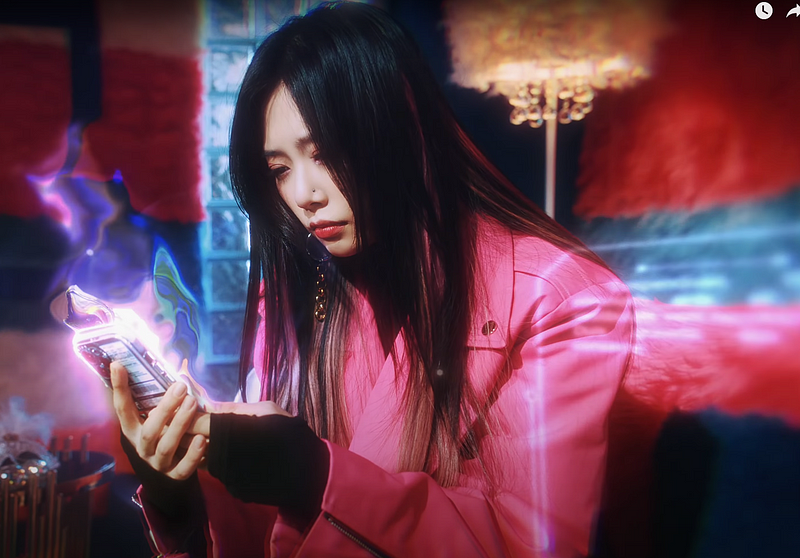
JiU is seen sitting in an apartment, deciding to check in with the communications methods of the modern world. To her dismay and sadness, she sees that hateful, mean commentary still exists, the corrupted energy radiating from her phone as she reads them (JiU herself mentions in one of the Music Video making videos that this is exactly what she is doing in these scenes. She sits back, coping with the discovery that her efforts might have been for naught (footage that did not make it into the video but which is seen in one of the “making of” videos even shows her dejected enough to put her head down in her hands).

SuA is actually forcibly kidnapped by the mystery corruption energy when we see her pulled into it (and thus the real world) in the music video’s action in one of the “temple” scenes. In a barely lit room, she is subjected to the discovery that not only does Utopia not exist in the world, but that hateful words still pervade it, and its malevolent aura attempts to affect her. In their interview on Naver NOW’s 5 Minutes Before 6, SuA states that the “bad comments are symbolized by having them seem like tears running down her face” as if they were so awful that they physically affect her. Determined, she finds a single physical light and attempts to fight back at the corrupting energy she perceives around her, going so far as to literally strike at the wavy aura in front of her.

Siyeon’s travels into the real world take her into a strange and isolated observation room with many screens, allowing her to view what is going on in many places around the globe. The corruption and hateful language she hears and sees being spoken and acted upon on these screens and the subsequent discovery of the lack of a Utopia are so jarring she drops the device she is using to view the screens, even as it seeps into the room from them. Eventually, after some reflection, she attempts to engage the aura of corrupted language, causing her to be thrown into a 4battle with it.

Handong finds herself in a structure that should be whole, but which appears to be cracking under both physical wear and the same destructive energy comprised of hateful language that she observed near the temple. Determined and defiant, she looks up at it even as she works to hold together what she’s discovered is far from beautiful and Utopian, and is instead broken and damaged.

Yoohyeon initially believes everything is fine, enjoying a world that even makes her smile at one point. She senses, however, that something is wrong, and after running into a graffiti-filled bathroom to privately check on what the world has been doing and saying, discovers that Utopia isn’t in existence, and that hateful language is very much still alive in the world, a theory further confirmed after she communicates with Dami. The realization of this is enough to almost send her to tears (and her account of this scene in one of the Music Video making videos states she was supposed to cry, but eventually could not). There’s also an interesting set of scenes involving her interspersed with this action that we’ll get back to.
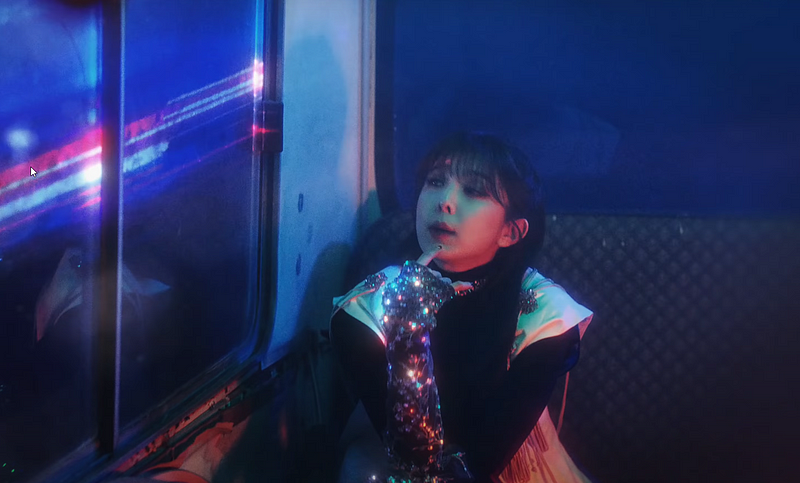
Dami elects to choose to travel the world, seeking transportation in a vehicle to do so. As the world goes by in a blur, however, Dami discovers that the corruption and hateful language of the world are visible even from her window. Communicating her discoveries to a distraught Yoohyeon, she reflects on what this means for Dreamcatcher’s prospect of a Utopian world, and appears to come to the discovery, based on her rap portion of the song, that it could be a mirage being pursued fruitlessly:
“Struggling with meaninglessness
We seemed to be in the same place
With endless thirst again
No matter how you chase a mirage, it’s not there”
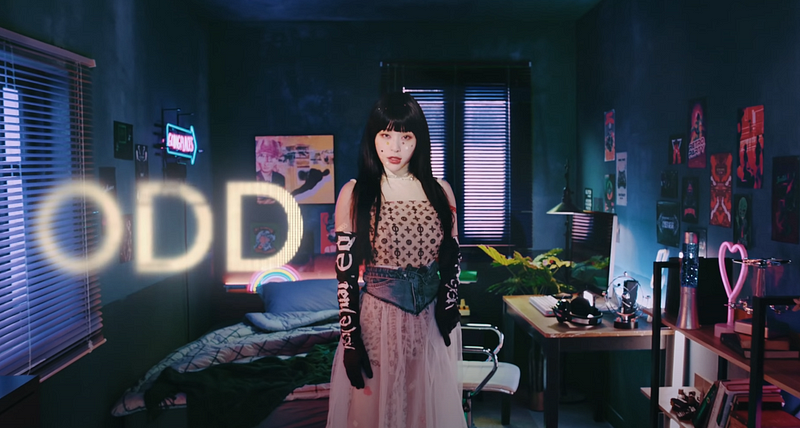
Gahyeon takes on a new persona, choosing to discover directly through daily living if the external Utopia Dreamcatcher imagined exists. She eventually discovers this is not the case, as she sees the corrupted language’s effect online directed towards her. Sensing that it is so prevalent that she can see it radiating from what she is reading on her monitor, she attempts to interact with it, only to have it surround and hurt her. This character depiction, of someone hurt by language online, is what she was supposed to be displaying, per her comments on the styling from one of the MV making videos.
So we’ve seen, through each mini-story feeding into the larger storyline of the music video, that each member of Dreamcatcher makes the same discovery — that the external Utopia that they had hoped and wanted for the world just wasn’t there.
But what does this mean, and how does it figure into the overall message Dreamcatcher is trying to send about their battle with hatred and bad language both offline and online for the past year? Let’s leave the literal action mostly behind, take a look at what ties all these stories together, and look at what the song’s lyrics are trying to inform us about on a figurative or symbolic level. We’ll see in the course of doing this what Dreamcatcher’s solution is to a very discouraging outcome of “no more Utopia”.
Finding Your “Inner Utopia” — The Message of “Odd Eye”

The trend in much of the above action as it relates to the message behind “Odd Eye” can be broken down into the same four steps:
- Being taken in by or otherwise blinded by the appeal of an “Outer Utopia”, or seeking complete happiness only from the outside world
- Discovering that seeking such a degree of happiness is an unachievable ideal and thus an illusion, due to the reality of how the world operates
- Using the above knowledge to grow as a person through simply being aware of it — thus being able to approach the world with open eyes
- With new understanding, seek happiness through discovering your “Inner Utopia” — a personal outlook, attitude, and goals for happiness that you control
A microcosm of this is seen in some of the Yoohyeon scenes in the music video, which appear interspersed with her “arc” and which have a great deal of symbolism attached to them.

Yoohyeon awakens in an isolated room, essentially a “blank slate” (which is reinforced by the last appearance of the iconic mask from the Dystopia series, now completely clean and serving as the seat from which she emerges). She becomes aware of the radio in the room and is enticed by its depiction of the world (resulting in the scenes involving her I described above). But she also becomes partially aware of the reality behind that depiction, of the presence of both good and evil that it reports.

Yoohyeon’s return to the isolated room after her harrowing experience with the real world, and her consumption of the red drink and subsequent “odd-eyed” effect it has on her, is to me an acknowledgment of an unpleasant, but life-changing truth, allowing her to move forward with open eyes — not unlike that now-iconic scene in 1999’s “The Matrix” where Neo chooses to take the “red pill” and learn the truth about the world.
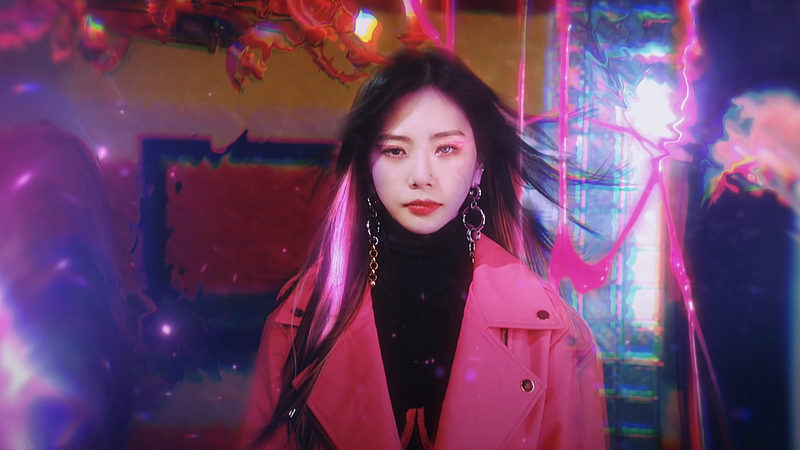
At its core, “Odd Eye” is about awareness, a perception of the world, how it operates, and how you change after gaining that knowledge. The form this takes is symbolically depicted by the condition the title colloquially describes — heterochromia iridum, where a set of someone’s eyes are a different color. Every member of Dreamcatcher is shown in the video at some point as eventually achieving this odd-eyed condition, and it is meant to depict this process of becoming more aware and less blind, both literally and figuratively. The lyrics of “Odd Eye” constantly refer to this kind of process of being blinded by seeking your happiness (your “Utopia”) through entirely external means and then having your eyes opened by realizing how illusory (and dangerous) that is:
Example 1:
“But I faced a lie thinking it was hope again
Getting more sophisticated, my mistake oh
Covered by light, so-so-sorrow
The moment when you’re caught off guard by a smile.”
Example 2:
“Ecstatic moment, a perfect illusion
By covering the reality
The visible ending changes
Again faced a lie thinking it was hope”
That danger, according to the song, appears to be in being ignorant and unaware of the world’s workings — that there will always be good, but also evil. To Dreamcatcher, seeking to force a perception of the world in which only good should be seen or sought is a mistake, and plays right into the idea of “Utopia” on its barest of definitions as literally being “no place” that can realistically be achieved. The negative consequence of this pursuit is a blindness that can cloud your sight from what is actually happening, something distinctly called out in the imagery of burning we see in a couple of shots in the music video.


Without the perception and understanding of the world’s inevitable good and bad parts, the seeking of a Utopia entirely driven externally by that world leads to not being able to see it properly at all. The remedy, it seems, is to be able to perceive the world through eyes that are opened to its realities, which returns us to the imagery of having an “odd-eyed” condition.

The difference in eyes is meant to depict a new way of looking at the world. According to JiU in the “5 Minutes Before 6” Naver NOW interview, she states “with one eye you can see happiness, and with the other eye, you can see despair and sadness”. This is the distinct result of becoming aware of how the world truly operates, and that there will inevitably be both good and bad within it. Much like the “Garden of Eden” story I referred to before, the knowledge of good and evil is certainly a loss of innocence, but it is also a loss of blindness as well, one referred to in the choruses of “Odd Eye”.
“Look at the hidden secret, odd eye
Get deeper into it, look at it
Everything is a plausible lie
Overshadowed by sweetness
Eyes that break boundaries
Despair to face me til the end
There will be an end
Back and forth
Here isn’t what I’ve been looking for
No more Utopia”

The idea that by becoming “odd-eyed” you are overcoming a “plausible lie”, an illusion of seeking an unrealistic ideal meant to distract you from what the reality of the world is, is a powerful one. Having been shown reality (an image of which is literally shown and stated as such in Yoohyeon’s, Siyeon’s, and Gahyeon’s scenes) you’re no longer bound by ignorance or a mirage of happiness that is wholly dependent on a perfect world that doesn’t exist. You’re free to pursue happiness on your own terms — an “Inner Utopia” driven entirely of your own volition and not dependent on anyone or anything else. As JiU states during the MyMusicTaste showcase for “Road to Utopia”, “We wanted to send the message that the real Utopia exists in your heart.”
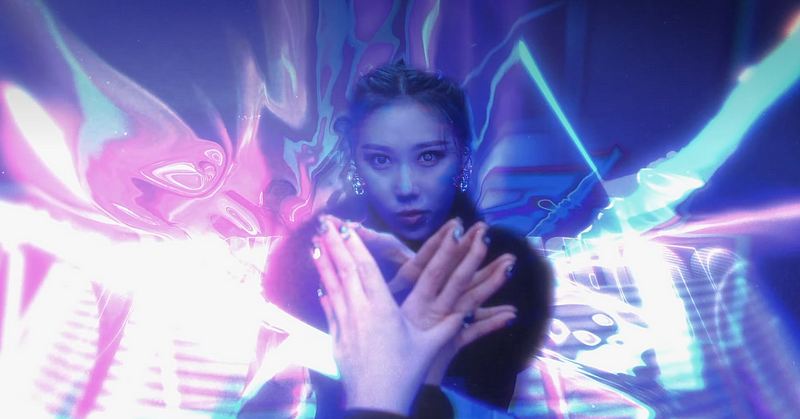
According to Dreamcatcher, being driven by a sense of prioritizing this “Inner Utopia”, supported by a realistic awareness and view of the good and evil of the world, is what allows us to move forward despite hardship. In the “5 Minutes Before 6” Naver NOW interview, as well as during the MyMusicTaste showcase, Dreamcatcher refers to several different examples of this concept. Siyeon referred to an example where she is woken up too early but instead of despairing at not being able to sleep more, remembers she is fortunate to have steady work and a busy schedule. Yoohyeon talked about traveling the world, being excited about it, and wanting to re-visit places she has been. On more simple levels, Gahyeon talked about loving just being able to have snacks when she feels like she wants some, while Dami was happy to be able to choose what and how much money to spend in favorite games where she wasn’t able to before.
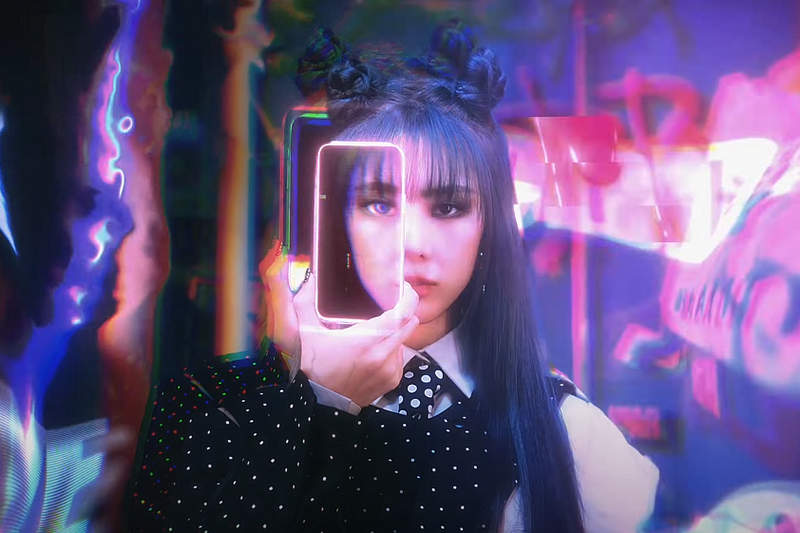
Where all this ends up, as JiU sums up in the Naver NOW interview, is “if you know how to love yourself, that’s self-happiness, Inner Utopia”. This kind of attitude, one more focused on one’s own personal outlook and attitude from which to draw happiness and strength, is at the core of being able to move forward even despite some of the external pressures and evils of the world. Self-love and knowing when to take care of one’s own needs and mental health, has become a more common refrain as a response to an increasingly intensive world filled with potentially negative stimuli, as well as to occupations and industries that demand a lot of personal dedication and mental fortitude.

For Dreamcatcher to espouse this attitude as workers in the K-Pop industry, one that oftentimes contains one of the most intensive and high-pressure workloads, is to show how they deal with what is inevitably one which can have a lot of pitfalls. A strong sense of “Inner Utopia” in oneself serves as a shield against these.
Dystopia’s Ending — The Outcome Of Battling Online Hatred

So what does this mean for the fight against online hatred that Dreamcatcher started in “Scream” and continued in “BOCA”? Interpreting things from a purely surface standpoint, you would think that they’d have thought the fight a dire one. None of the lyrics seem to outline any kind of hopeful outcome (in fact one of the sets of lines talks about being “In a fate that cannot be changed/Hope is fading away”), and the last shot of the video, which put forth the notion that Dreamcatcher never found the Utopia they dreamed of, seems to have a lot of “bad ending” vibes. It also doesn’t help that the bridge seems to depict this sort of descent into darkness.
“I wanted to change in a hurry (Ideal dream)
The desire fades away little by little
As if following the shadow
I thought was coming after me, oh
In a fate that cannot be changed
Hope is fading away”
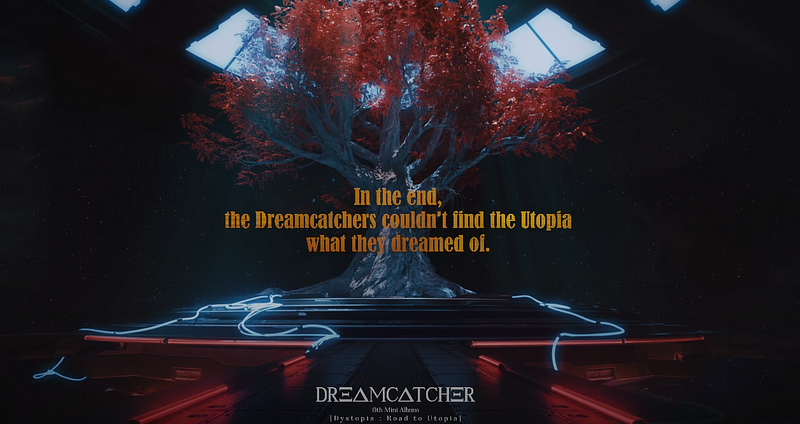
But these lyrics seem to refer to what Dreamcatcher mistakenly tried to do in seeking an externally focused “Outer Utopia”, not what was ultimately decided. Given what Dreamcatcher has said in interviews and how they’ve mentioned a lot about “Inner Utopia”, the message seems to be more realistic if not at minimum determined, despite discovering how things aren’t as easy to fix in the world. SuA talks of “Inner Utopia” being represented by individuals in one of the MV making films and JiU states in the “5 Minutes Before 6” Naver NOW interview that “having confidence in oneself means obstacles can be overcome”.
Through their journey, Dreamcatcher appears to have come to the conclusion that hatred, especially online hatred, will always exist. It isn’t as easy as realizing that it is out there and going out to silence everyone who is inclined to speak about it. Such prospects are more along the lines of seeking an “Outer Utopia”, with an ideal that just isn’t realistically achievable. Instead, making certain that your own mentality, your own outlook, and your own emotions follow along towards what you believe to be your own “Inner Utopia” will make dealing with the inevitable problems of the world, including hatred, a lot easier to deal with — if not stand up against. Yes, Dreamcatcher never found the Utopia they were searching for — but it was the wrong Utopia to look for in the first place.
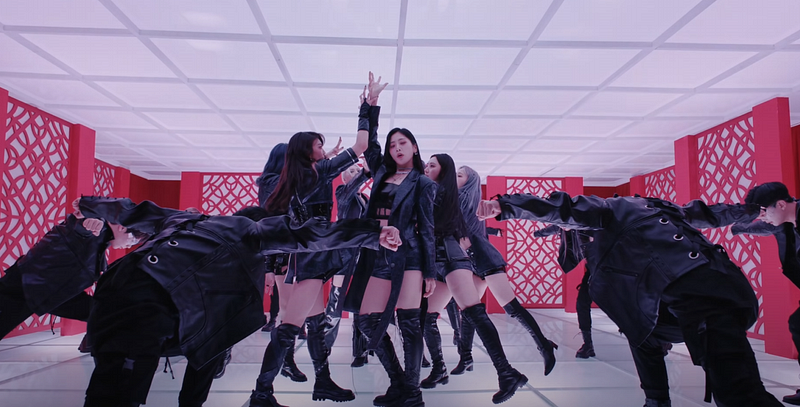
In the last portion of the Dystopia story, you can see this more realistic, grounded ending Dreamcatcher’s battle against evil language and online hate take form on both the storyline and the symbolic level. Dreamcatcher returns to the Temple, and armed with the knowledge of the world, performs one last set of tasks and rituals (depicted in part by a shot of a spinning Dami) to change and protect the Tree of Language once more. Once this is finished, Dreamcatcher departs, showing leader JiU walking away while finally understanding that, at least on the outside, that there is “no more Utopia”.

The tree, no longer lush and green, but also no longer burning or dying, takes on a kind of in-between state — a deep, autumnal orange with what appears to be artificial cables sustaining it, rather than the natural water that did so in the ending of “BOCA”. To me, this seems to showcase the kind of balance Dreamcatcher has introduced to the Tree of Language to be sustained — a realistic understanding that it has a natural presence, but that it still requires a bit of artificial help from good people to remain as it is. It’s a kind of representation of how we can’t rely on things to just work themselves out or be entirely based in the natural order of things — we have to introduce our own agency in battling hatred, being good in our words and deeds, and not allowing false hopes or ideals to blind us to what is out there. It’s not a conclusion easily reached, or without some pain or time spent.

It’s for that reason that I’ve thoroughly enjoyed Dreamcatcher’s “Dystopia” storyline. It’s not just a kind of fairy tale telling where the heroes inevitably do good and banish evil forever — Dreamcatcher, I think, understands that it isn’t as simple to get rid of the problem of hate speech. It’s really an ongoing fight, a sort of battle that requires constant vigilance to keep at, and more importantly, is one where you learn and grow.

The end destination of this journey, which is appropriately reflected in the last choreography motion by forming the Tree of Language, then having it “morph” into everyone making the “odd eye” motion, shows the evolution of approaching “people forgetting how to say good things”. Instead of relying entirely on an external factor like the Tree, the focus turns inward, towards one’s own mentality and attitude, driven by increased awareness, trials, and experiences, that ultimately make you stronger for the next time you have to deal with evil, hateful things in the world. It’s an appropriate, realistic place to end Dreamcatcher’s “Dystopia” trilogy, and in my opinion, is going to serve as one of K-Pop’s most ambitious and impactful world-building musical efforts. I hope you’ve enjoyed it as much as I have.

Credit to the following for assistance in writing this (once again extremely long) article on Dreamcatcher’s “Dystopia”:
- 7 Dream Subs — One of a few major translation groups on YouTube providing a critical service to non-Korean speaking Dreamcatcher fans by subtitling Dreamcatcher content, which I was able to cite in this article.
- 7 Dreamers — The end-all-be-all fansite for all things Dreamcatcher, and most critically, the site of many translated text interviews without which I would not be able to source much of the supporting information from Dreamcatcher members.
- Dreamcatcher Discord’s “Cheesu Toast” — for providing a consistent and helpful service in providing translations of many of Dreamcatcher’s live appearances. Translations of “5 Minutes Before 6” from Naver NOW and other sources cited in this article provided much of the supporting material from Dreamcatcher themselves, and would not be possible without Cheesu’s efforts. “Thanks for the subs, Cheesu” is a thing in DCCord for a reason.
- /r/dreamcatcher on Reddit — another fan community that has provided plenty of encouragement, as well as insight and opinions, into a lot of Dreamcatcher discography to help drive discussions
- All my regular readers — a small, but loyal group, your feedback provided on all my articles, including the deep dives like this one, have helped shape my content to date. I look forward to hearing more from you!
